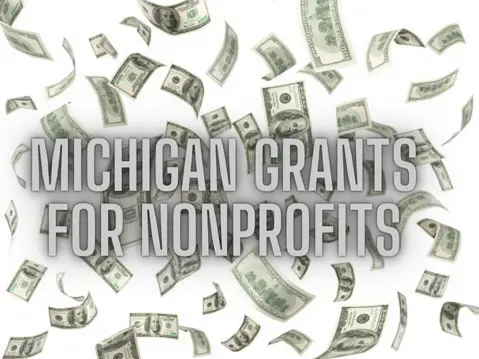Listed building grants are financial awards offered by government bodies, local authorities, and charitable organizations to support the repair, restoration, and preservation of listed buildings.
These buildings are recognized for their special architectural or historical significance and are protected by law. The grant funding helps cover the costs associated with maintaining these properties in a way that preserves their heritage value.
Listed buildings can range from grand castles and stately homes to humble cottages and industrial structures. What makes them “listed” is their inclusion in a national or local register of buildings deemed to have special interest.
The listing process typically involves an assessment by heritage experts who evaluate the building’s historical importance, architectural merit, and contribution to the local or national heritage.
For example, in the UK, about 400,000 buildings are listed, meaning any restoration work may need special permissions and adherence to stringent guidelines to ensure authentic preservation.
Knowing that there are grants specifically aimed at helping preserve these treasures can be both inspiring and relieving. It means that the often high costs associated with restoration might be shared among various funding bodies, easing the financial burden.
Why Are Listed Building Grants Important?
Before diving into the types and application processes, it’s worth understanding why listed building grants are so crucial. Preserving historical structures isn’t just about keeping old buildings standing; it’s about maintaining a tangible connection to our past.
These buildings tell stories of previous eras, architectural trends, and the way communities once lived. Grants not only help cover the economic costs of maintenance and restoration but also contribute to cultural preservation, tourism, and community pride.
For instance, a successful restoration not only maintains the aesthetic and historical integrity of a building but can also increase local tourism. According to the Heritage Lottery Fund, restoration projects have led to increased visitor numbers in some areas by up to 60%, significantly boosting the local economy. Grants often enable projects that might otherwise be financially unfeasible, ensuring that local communities and future generations can enjoy these heritage sites.
Types of Listed Building Grants
There are several types of grants available for listed building projects, each with specific purposes and eligibility criteria. These grants have been developed to cater to a range of scenarios, so it’s beneficial to understand which one might suit your needs best:
- Conservation Grants: These grants are awarded to support the repair and conservation of listed buildings. They can cover costs for both structural repairs and cosmetic restoration, ensuring that the building remains habitable and safe while preserving its historic features. For instance, a conservation grant might cover the restoration of original woodwork or leaded windows, which are often expensive to repair.
- Heritage Lottery Fund (HLF) Grants: The HLF offers grants for a variety of heritage-related projects, including the restoration of listed buildings. These grants are typically awarded for larger, more complex projects and can cover a significant portion of the costs involved. As of recent reports, the HLF has awarded over £3 billion in funding since its inception, supporting thousands of projects across the UK. Projects that receive HLF funding often undergo rigorous application and evaluation processes, emphasizing community involvement and sustainability.
- Local Authority Grants: Many local councils offer funding to help with the restoration and upkeep of listed buildings within their jurisdiction. These grants are often more targeted and can be a great starting point for smaller-scale projects. For example, a local council might offer a grant to repair a historic community center, ensuring that the building remains a vibrant part of local culture and heritage.
- National Trust Grants: The National Trust, a charitable organization focused on the preservation of heritage sites, offers grants for listed buildings that are at risk of decay or demolition. These grants are often awarded to help save endangered historic structures. The National Trust holds a wealth of expertise and resources that can be leveraged to help restore and maintain properties of national significance.
- Emergency Repair Grants: In cases where a listed building is in immediate danger of deterioration, emergency repair grants may be available to prevent further damage. These grants are typically time-sensitive and must be applied for quickly. For example, if a roof is leaking and threatens the integrity of a historic interior, an emergency repair grant can provide the necessary funds to act fast.
Each type of grant caters to different stages or aspects of a restoration project, from initial emergency repairs to long-term conservation efforts. Understanding which type suits your project is key to a successful application.
Who Can Apply for Listed Building Grants?
Eligibility for listed building grants depends on the specific grant program you are applying for. However, in general, the following entities may be eligible to apply for listed building grants:
- Private Property Owners: If you own a listed building, you can apply for grants to support its preservation. This applies to both residential and commercial properties. Many homeowners are pleasantly surprised to learn that financial support is available for maintaining the historical integrity of their properties, which often come with costly upkeep.
- Charities and Nonprofits: Organizations that manage listed buildings, such as historic preservation societies or museums, may also be eligible to apply for grants. These groups typically have experience with managing restoration projects and can leverage their expertise to secure funding and ensure projects meet conservation standards.
- Local Authorities: Local councils can apply for grants to restore public listed buildings, such as town halls, libraries, and schools. These projects often focus on preserving buildings that serve a community function, balancing historical preservation with modern-day use.
- Heritage Organizations: Some grants are specifically available for organizations dedicated to the conservation of heritage sites. These organizations often partner with government bodies, private donors, and community groups to support a wide range of preservation projects.
It is important to note that listed building grants are often intended to support long-term preservation rather than cosmetic changes. Applications are generally considered based on the building’s historical significance and the project’s potential impact on the building’s conservation. This means that applicants must typically provide evidence of how their project will contribute to preserving or enhancing the building’s historical value.
How to Apply for Listed Building Grants
Applying for a listed building grant can seem daunting, but the process is relatively straightforward if you follow a few key steps. Let’s break down the process into manageable parts, so it feels less like a mountain and more like a series of small, achievable steps:
- Research Available Grants: Start by researching the various grants available in your area. This includes government grants, local authority funding, and charitable grants. Websites like Historic England and the Heritage Lottery Fund are excellent starting points for finding available grants for listed buildings. Take your time to review different programs, their deadlines, and how much funding they typically award.
- Check Eligibility Criteria: Carefully review the eligibility requirements for each grant to ensure your project qualifies. Each grant will have specific criteria, such as the type of building, the scale of the project, and the condition of the building. Some programs might require that the building be accessible to the public or serve an educational purpose.
- Prepare Your Proposal: When applying for a listed building grant, you’ll need to provide detailed information about your project. This includes a description of the building, its historical significance, and the work that needs to be done. Be prepared to submit architectural plans, photographs of the building, and a cost estimate for the project. It helps to create a narrative that connects the building’s story to the restoration plan. Why is this building important? How will restoring it serve the community or preserve history?
- Write a Compelling Grant Application: Your grant application should clearly demonstrate the importance of the building and the need for conservation. Be sure to highlight the historical value of the building, the specific repairs required, and the benefits of preserving it for future generations. Use clear and concise language to make your application easy to understand. A conversational tone can also make your application more engaging. Imagine you’re talking to someone who is passionate about historic preservation—let that enthusiasm shine through!
- Provide Supporting Documentation: Many grant programs require supporting documentation, such as proof of ownership, planning permission (if applicable), and environmental impact assessments. Make sure you have all the necessary paperwork ready before submitting your application. Being organized can drastically improve your application’s credibility. Create a checklist of all required documents and tick them off as you gather them.
- Submit Your Application: Once your application is complete, submit it according to the instructions provided. Some grant programs accept online submissions, while others may require physical copies of your application. If the process seems unclear at any point, don’t hesitate to reach out to the grant provider for guidance. They often appreciate proactive questions and may provide helpful tips.
- Follow Up: After submitting your application, it’s important to follow up to ensure that it has been received and is being reviewed. If you’re awarded a grant, be sure to keep detailed records of how the funds are used and provide updates on the progress of the restoration. Effective communication with the funding body can lead to a smoother process and might open doors for future opportunities.
Maximizing Your Chances of Success
Securing a listed building grant can be competitive, but there are steps you can take to increase your chances of success:
- Highlight the Historical Significance: Make sure your application emphasizes the historical value of the building. Highlight its architectural features, historical relevance, and role in the community. Use specific examples—perhaps the building was the site of an important event, or it exemplifies a particular architectural style that’s rare today.
- Demonstrate the Need for Conservation: Clearly outline why the building needs restoration and the potential risks of leaving it in disrepair. Grants are more likely to be awarded to projects that address urgent preservation needs. Use data or expert opinions if available. For example, mention structural issues validated by a professional survey that could lead to irreparable damage if not addressed promptly.
- Provide a Detailed Plan: Include a comprehensive plan for the work that needs to be done, along with an estimated budget. Funders want to see that the project is well-organized and that the funds will be used efficiently. Breakdown costs for materials, labor, and contingencies. A detailed timeline of the project phases can also show preparedness and forethought.
- Showcase Community Impact: Many grant programs prioritize projects that will benefit the local community or provide educational opportunities. If your project has a wider social impact, be sure to highlight it in your application. How will restoring this building provide jobs, educational tours, or community events? When funders see a tangible benefit to people’s lives, they’re more likely to support the project.
- Leverage Partnerships: Collaborating with local heritage organizations, historical societies, or other stakeholders can strengthen your application. Partnerships can demonstrate community support for the project and increase its chances of success. Providing letters of support from reputable organizations or community leaders can be a powerful addition to your application.
Additionally, consider attending grant workshops or networking events where past grant recipients share their experiences. Insights from those who’ve successfully navigated the process can offer invaluable lessons and strategies.
Real-World Examples of Successful Grant Applications
Let’s look at a few short case studies of projects that successfully secured listed building grants:
- Case Study 1: Restoring a Victorian Schoolhouse
A community group wanted to restore a disused Victorian schoolhouse listed as Grade II. By partnering with the local council, they researched and applied for a Heritage Lottery Fund grant. Their application highlighted the building’s architectural significance and planned a community center that would benefit the entire neighborhood. The detailed budget, community letters of support, and a comprehensive restoration plan led to the award of a £150,000 grant. Today, the building serves as a hub for art classes, local meetings, and cultural events. - Case Study 2: Saving a Historic Church Roof
An owner of a historic church discovered leaks that threatened the original stained glass windows and wooden beams. The urgent need for repairs prompted an application for an emergency repair grant. The application included structural assessments by conservation experts and a swift plan of action. After emphasizing the risk of further decay and the building’s role as a landmark, the church received the needed funding, allowing for repairs that preserved its unique character.
These examples show how focusing on urgency, community benefit, and detailed planning can lead to successful funding.
Key Resources for Listed Building Grants
Here are some key resources to help you find listed building grants and additional support:
- Historic England: Historic England offers a variety of grants and funding opportunities for the conservation of listed buildings across England. They also provide guidance and case studies of successful projects.
- Heritage Lottery Fund: The Heritage Lottery Fund supports projects that conserve and protect heritage sites, including listed buildings, offering generous funding amounts for large scale projects.
- National Trust: The National Trust offers grants and funding for heritage preservation projects across the UK, along with expert advice and resources on conservation best practices.
- Local Council Websites: Check your local council’s website for information on available funding for listed buildings in your area. Many councils list specific grant programs tailored to regional needs.
- The Architectural Heritage Fund: AHF provides advice and support for people involved in heritage preservation projects, including listed building grants, often offering training sessions and workshops.
The Role of Data, Sources, and Statistics in Your Application
Using data, statistics, and credible sources in your grant application can greatly enhance its credibility. Here are a few ways to leverage these elements:
- Historical Data: Include dates, architectural styles, and any historical events tied to the building. This shows a deep understanding of the property’s significance.
- Financial Data: Provide detailed cost breakdowns, quotes from contractors, and past expenditures if applicable. Transparency in finances reassures funders about fiscal responsibility.
- Impact Statistics: If available, include statistics on how similar projects have benefited communities—such as increases in tourism, job creation, or educational outreach. For instance, a report may indicate that heritage site renovations have led to a 20% increase in local business revenue.
- Expert Opinions: Citing statements or endorsements from conservation experts, historians, or local authorities can add weight to your application.
Why Subscribe to Grant Writing Academy Newsletter?
As you navigate the complex world of grant applications, having expert guidance can be a game-changer. The Grant Writing Academy Newsletter is a valuable resource designed to equip you with advanced knowledge and tools to increase your success rates in securing funding for listed building projects and other ventures. Here’s what you can expect by subscribing:
- Tips and Strategies: Weekly insights on crafting compelling grant proposals, understanding funding criteria, and tailoring your approach to specific grants.
- Templates and Tools: Downloadable templates for project proposals, budgeting spreadsheets, and planning checklists that can simplify the application process.
- Success Stories and Case Studies: Real-life examples of successful grant applications, offering inspiration and practical advice.
- Expert Advice: Direct access to advice from seasoned grant writers and heritage conservation experts who can answer your specific questions.
- Alerts on New Opportunities: Timely updates on new grant opportunities, deadlines, and changes in funding criteria so you never miss a chance.
Subscribing to the newsletter is simple—just sign up on the Grant Writing Academy website with your email address, and you’ll start receiving expert guidance that can transform your grant writing journey.
Conclusion
Listed building grants are an invaluable resource for preserving our cultural heritage. Whether you are an individual property owner, a local authority, or a heritage organization, securing funding for your restoration project can help ensure that historic buildings are protected for generations to come.
By understanding the types of grants available, knowing how to apply, and utilizing expert strategies, your chances of obtaining the necessary funding can significantly improve.
Remember, the process may take time and effort, but the result—a beautifully restored historic building that connects us to the past and enriches the community—is well worth it. And for ongoing support, tips, and resources, subscribe to the Grant Writing Academy Newsletter.
Gain access to strategies, templates, tools, and insider knowledge that can enhance your success rates not only in securing listed building grants but also in tackling any grant application with confidence and expertise.
Ready to take your grant writing skills to the next level? Subscribe to the Grant Writing Academy Newsletter today and become part of a community dedicated to heritage preservation and funding success!
Additional Resources and Support
a) Expand Your Knowledge
The grant writing field is always evolving. Keep learning and improving your skills to stay competitive.
Recommended Resources:
- Request for Proposal Success: How to Write Proposals That Win: Learn the techniques and strategies to create standout proposals.
- Tech Startup Funding Secrets: Navigating Grants for Maximum Growth: Perfect for those in the tech sector looking to leverage grants for scaling.
- Grant Proposal Guide for Environmental Projects: Tailored for environmental initiatives seeking to secure impactful funding.
- The Ultimate Guide to Federal Grant Applications: Techniques for Success: Master the complexities of federal grants with actionable insights.
Explore More Books Here
b) Invest in Expert Guidance
Want to fast-track your growth and achieve even more success?
Join one of our mentorship programs for tailored advice and support:
Mentorship Programs:
- 3-Month Mentorship: The Foundation Builder: A short-term plan to refine your grant writing skills and win your first (or next) grant.
- 6-Month Mentorship: The Proposal Pro: Dive deeper into strategies, proposal reviews, and funding plans.
- 1-Year Mentorship: The Funding Champion: Build long-term success with comprehensive guidance, unlimited reviews, and exclusive resources.
C) Book a One-on-One Consultation
Sometimes you just need personalized advice to tackle challenges or fine-tune your strategy. Let’s work together to solve your unique grant writing challenges.






